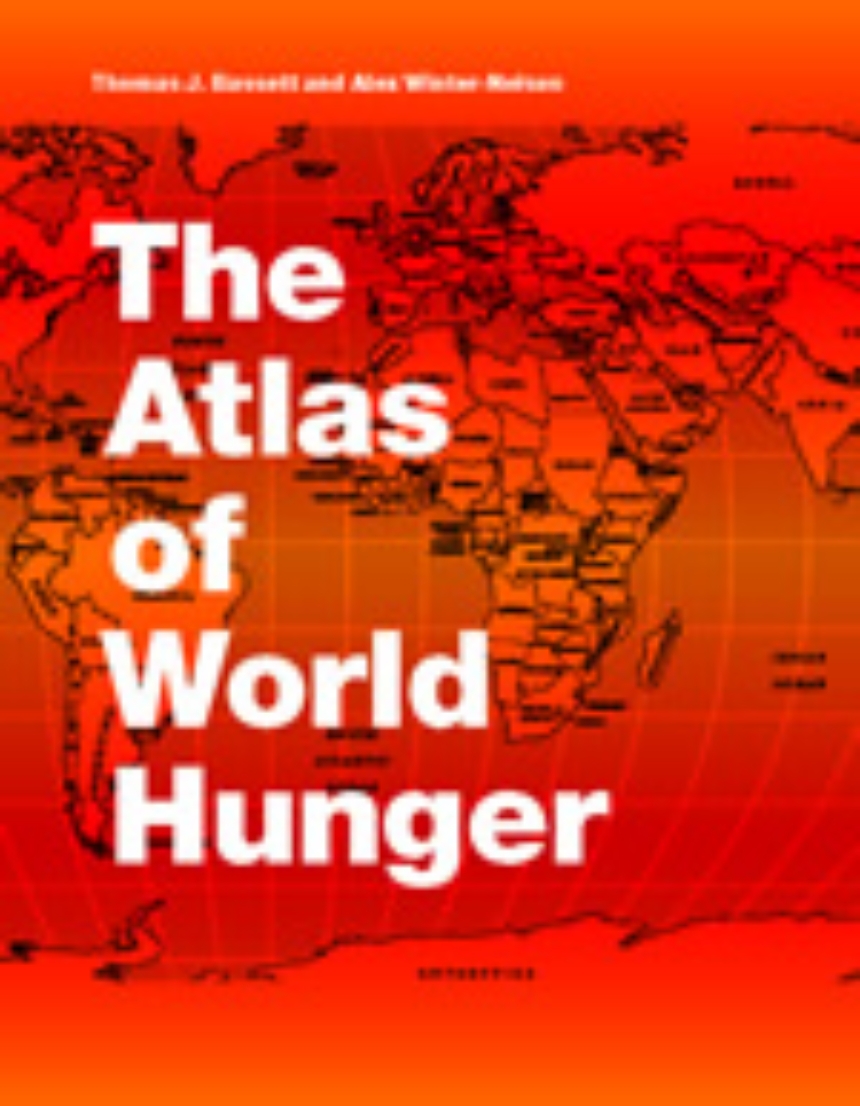The Atlas of World Hunger
Earlier this year, President Obama declared one of his top priorities to be “making sure that people are able to get enough to eat.” The United States spends about five billion dollars on food aid and related programs each year, but still, both domestically and internationally, millions of people are hungry. In 2006, the Food and Agricultural Organization of the United Nations counted 850 million hungry people worldwide, but as food prices soared, an additional 100 million or more who were vulnerable succumbed to food insecurity.
If hunger were simply a matter of food production, no one would go without. There is more than enough food produced annually to provide every living person with a healthy diet, yet so many suffer from food shortages, unsafe water, and malnutrition every year. That’s because hunger is a complex political, economic, and ecological phenomenon. The interplay of these forces produces a geography of hunger that Thomas J. Bassett and Alex Winter-Nelson illuminate in this empowering book. The Atlas of World Hunger uses a conceptual framework informed by geography and agricultural economics to present a hunger index that combines food availability, household access, and nutritional outcomes into a single tool—one that delivers a fuller understanding of the scope of global hunger, its underlying mechanisms, and the ways in which the goals for ending hunger can be achieved. The first depiction of the geography of hunger worldwide, the Atlas will be an important resource for teachers, students, and anyone else interested in understanding the geography and causes of hunger. This knowledge, the authors argue, is a critical first step toward eliminating unnecessary suffering in a world of plenty.
See sample pages (PDF format, 0.8Mb).
216 pages | 47 halftones, 3 line drawings, 103 color plates, 35 tables | 8 1/2 x 11 | © 2010
Earth Sciences: General Earth Sciences
Economics and Business: Health Economics
Geography: Economic Geography, Geography--Reference
Reviews
Table of Contents
List of Figures
List of Tables
List of Boxes
Acknowledgments
1. Introduction
Part I. Locating Hunger
Indicators of Malnutrition
2. Food Availability
3. Prevalence of Undernourishment (POU)
4. Micronutrient Malnutrition
5. Malnutrition and Obesity
6. Growth Failure
7. Household Poverty
8. The Hunger Vulnerability Index
Patterns of Hunger within Countries
9. Child Growth Failure in Uruguay
10. Food Insecurity in the United States
11. Malnutrition within India and Mexico
Part II. The Sources of Hunger
National Resources
12. Population Growth
13. Arable Land per Capita
14. Environmental Systems Health
15. Human Resources: Literacy
16. Built Resources: Roads
17. Change in Resource Base
18. Climate Change
Technology
19. College and University Enrollment and Research and Development
20. Agricultural Technology: Fertilizer
Institutions and Power Relations
21. Colonialism and Neocolonialism
22. Debt and International Power Relations
23. Political Freedoms
24. Income Inequality
25. Gender Inequality
Poverty
26. National Income per Capita
27. Extreme Poverty
Exacerbating Conditions and Events
28. Dependency Ratio
29. HIV/AIDS
30. Malaria
31. Health Expenditures per Capita
32. Unsafe Water and Poor Sanitation
33. International Trade and Primary Products
34. International Terms of Trade
35. Terms-of-Trade Shocks
36. Food Trade
37. Food Price Shocks
38. Development Aid and Food Aid
39. War
40. Natural Disasters
Conclusion
Appendix 1. Map Data Sources
Appendix 2. The Hunger Vulnerability Index
Notes
References
Index
